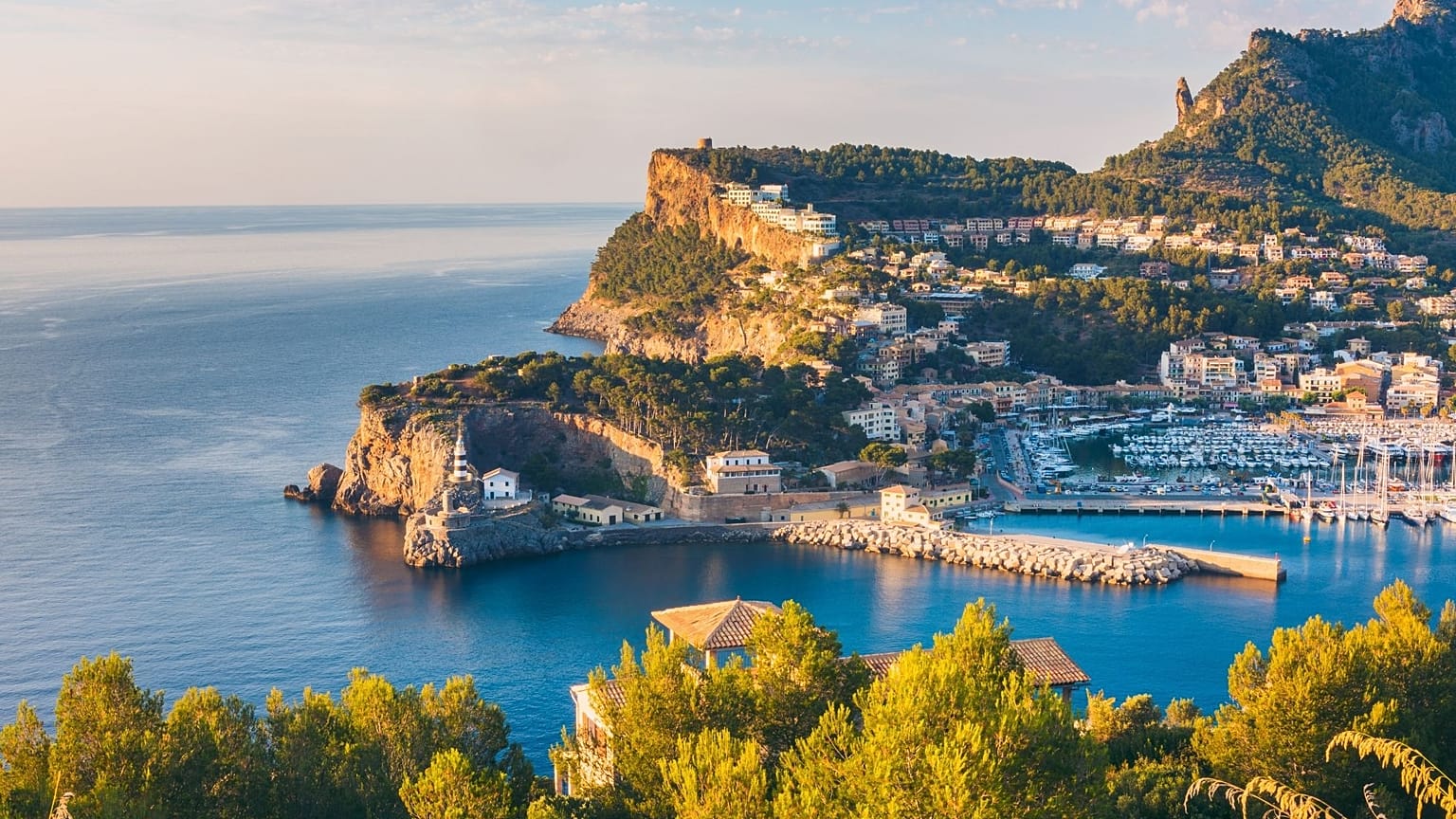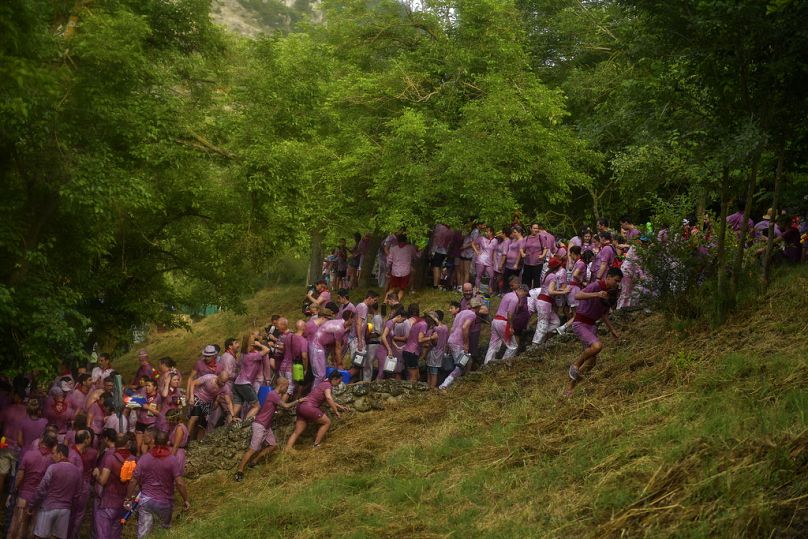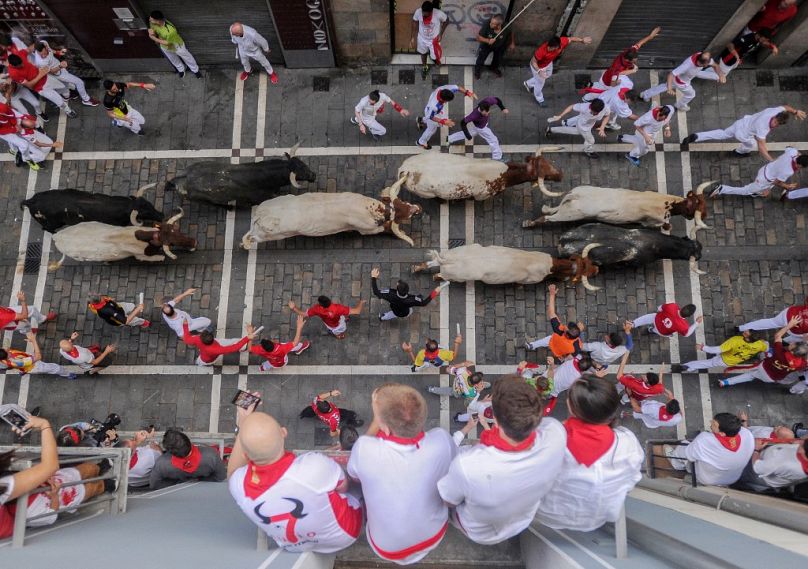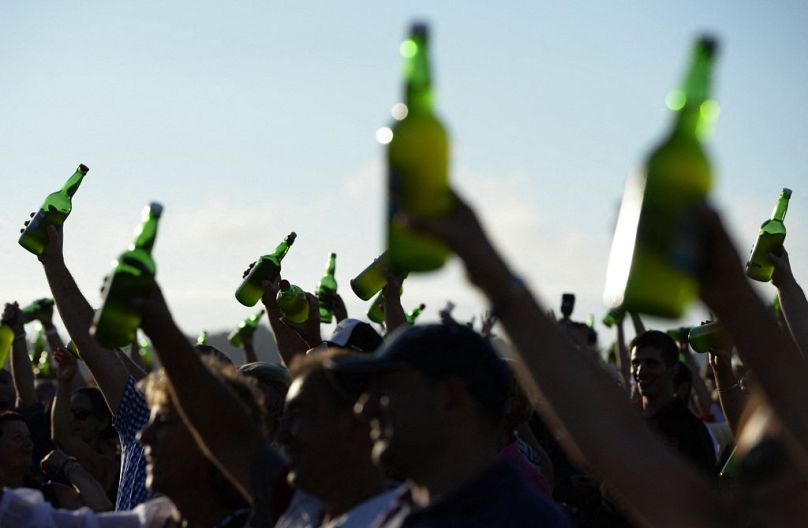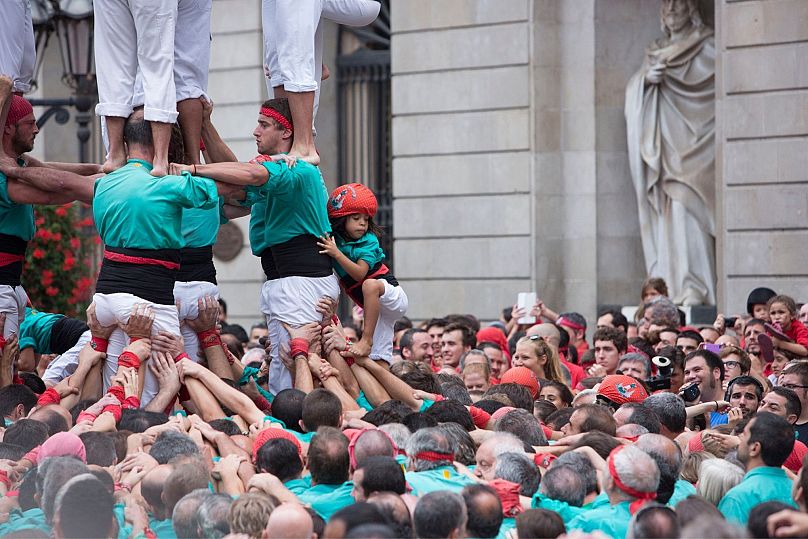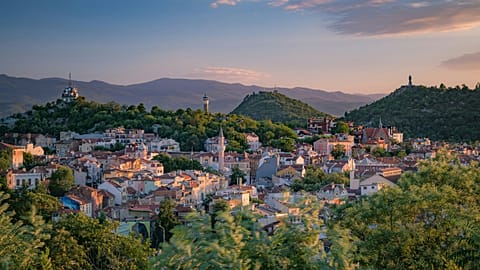Where to go in Spain for 10 of the country’s most unique festivals, from Catalonia’s human towers to paella tasting and Rioja wine fights.
It’s always fiesta time somewhere in Spain. This lively European country has a reputation for its year-round roster of festivals, with live music and fireworks illuminating village squares and city streets all over the country.
But the real joy is in finding the hyper-local festivals that are put on in one particular area for a particular reason. For visitors, they are the perfect way of understanding what makes a local area tick.
Here’s our pick of the best festivals in Spain, from human-tower competitions to cider-drinking world record attempts and historic pirate beach battles.
Es Firó, Mallorca
When? Second Monday in May
Mock historic battles between Moors and Christians are celebrated in several areas of Spain throughout the year, but nowhere other than Mallorca will you see a band of Muslim pirates storm the beach.
The annual Es Firo in the northern town of Sóller commemorates a failed attack on the town by Algerian invaders in 1561.
Locals dress up in traditional Mallorcan costumes while the would-be attackers don period North African clothing, arriving by boat for a number of engagements set to booming drums.
Fiesta de los Patios, Córdoba
When? Early to mid-May
Córdoba is famous for its pretty internal courtyards - a legacy of the Andalucian town’s Islamic heritage.
Most of these plant-filled private spaces remain hidden for all but one week of the year, when residents fling open their gates for the colourful Patio Festival.
It involves a competition for best patio, as well as flamenco and concerts in some of Córdoba’s most exquisite ancient courtyards.
Feria del Caballo, Jerez de la Frontera
When? Mid-May
Andalucia’s dressage traditions are elaborate and iconic in Spain. And as the home of the Royal Andalusian School of Equestrian Art and dozens of stables, there is nowhere better to see horse performances than Jerez - especially during the annual Horse Festival.
Stallions strut their stuff every year in the sherry capital’s González Hontoria fairground, festooned with paper lanterns and garlanded archways.
Batalla del Vino, Rioja
When? Late June
Always wanted to have red wine fired at you out of a water pistol? Then Haro is the place for you.
This pretty village in Rioja, Spain’s most important wine region, is home to the joyous annual Haro Wine Fight, which sees combatants drench each other with the local tipple using buckets, jugs and bottles.
The festival starts with a 7km procession led by the town’s mayor, followed by mass and then a descent into red-wine-soaked chaos.
The event has been running in earnest since the 1960s, but its origins lie in a 13th-century border dispute between Haro and a neighbouring village.
Fiesta de San Fermin, Pamplona
When? Second week of July
The running of the bulls has become a major phenomenon in the past 20 years - not least because it’s considered a little dangerous.
Held over one week of the year in the medieval Navarre town of Pamplona, it involves letting a mob of bulls loose to career down the streets chasing willing runners.
Up to 3,500 foolhardy participants take part each day. Deaths - usually by gorging - are rare, but not unheard of.
Bull running is a practice that dates back to the 13th century in Spain. Pamplona isn’t the only city to still do it, but the festival here - linked to the martyrdom of San Fermin, the city’s patron saint - has become legendary. The photos are insane.
Festa do Pulpo de O Carballino, Galicia
When? Second Sunday in August
Once traded with Cistercian monks and distributed to the poor, Galician ‘pulpo’ (octopus) has been celebrated at local fairs since the 16th century.
But it wasn’t until a group of locals launched the annual gathering of the Festa do Pulpo de O Carballino 60 years ago that it became more broadly known as a regional gastronomic speciality.
Today, thousands of tourists descend on O Carballino’s municipal park annually to gorge on the Estuarine delicacy and taste local dishes such as pulpo a gallega, served with sweet paprika and potato.
Fiesta de la Sidra Natural, Gijon
When? August
Every year, hundreds of people get together on Gijon’s Poniente Beach to beat the world record for the greatest number of people simultaneously pouring cider in one place. The contest is the pinnacle of Gijon’s annual Natural Cider Festival.
Asturias is Spain’s cider capital, responsible for 80% of the country’s production. And every year the coastal Asturian town of Gijon celebrates their monopoly with this week-long fiesta of apple markets, cider courses, urban art and tastings at cider cellars.
La Tomatina, Buñol
When? Last Wednesday in August
One of Spain’s quirkiest festivals is La Tomatina, the annual tomato-throwing rampage in the Valencia town of Buñol.
The food fight - held in the town square - only lasts an hour, but that’s long enough to paint the town (and yourself) red. Afterwards, a fire truck hoses everything down and the crowds dissipate into parties.
Unlike most festivals in Spain, this one has no religious origins. It started by accident in 1945 when a fight broke out among local youths near a vegetable stand during a parade of giants and bigheads (the papier mâché-headed costumes made famous by Valencia’s Las Fallas).
Fiesta del Arroz, Sueca
When? September
Any fans of paella know that the best dishes come from the region of Valencia. But one place in particular, Sueca, is known as Spain’s ‘town of rice’. Each year the locals celebrate their favourite grain during the Rice Festival.
Over the first half of September, the festival culture programme puts on live music, street parties and fireworks.
Visitors also have the chance to taste entries from the international paella competition that coincides with the fiesta, tour local rice paddy fields and watch the rice parade.
Concurs de Castells, Tarragona
When? First weekend in October
The building of ‘castells’ - human towers - where organised groups scale each other’s shoulders to create towers up to 10 storeys high, has been a sport in Catalonia for more than 200 years.
But in 1932, this striking feat was formalised as a competitive sporting event in its heartland of Tarragona with the Concurs de Castells, which now takes place every other year on even years.
Around 30 teams compete over a weekend in Tarragona’s Tarraco Arena Plaça, with five rounds scored to determine the winners. As capacity is limited inside the competition space, it’s not easy to get tickets for the live event; Saturday seats are usually less in demand.
This nail-biting spectacle helped get Catalonia’s castells added to UNESCO’s Intangible Cultural Heritage list in 2010.















